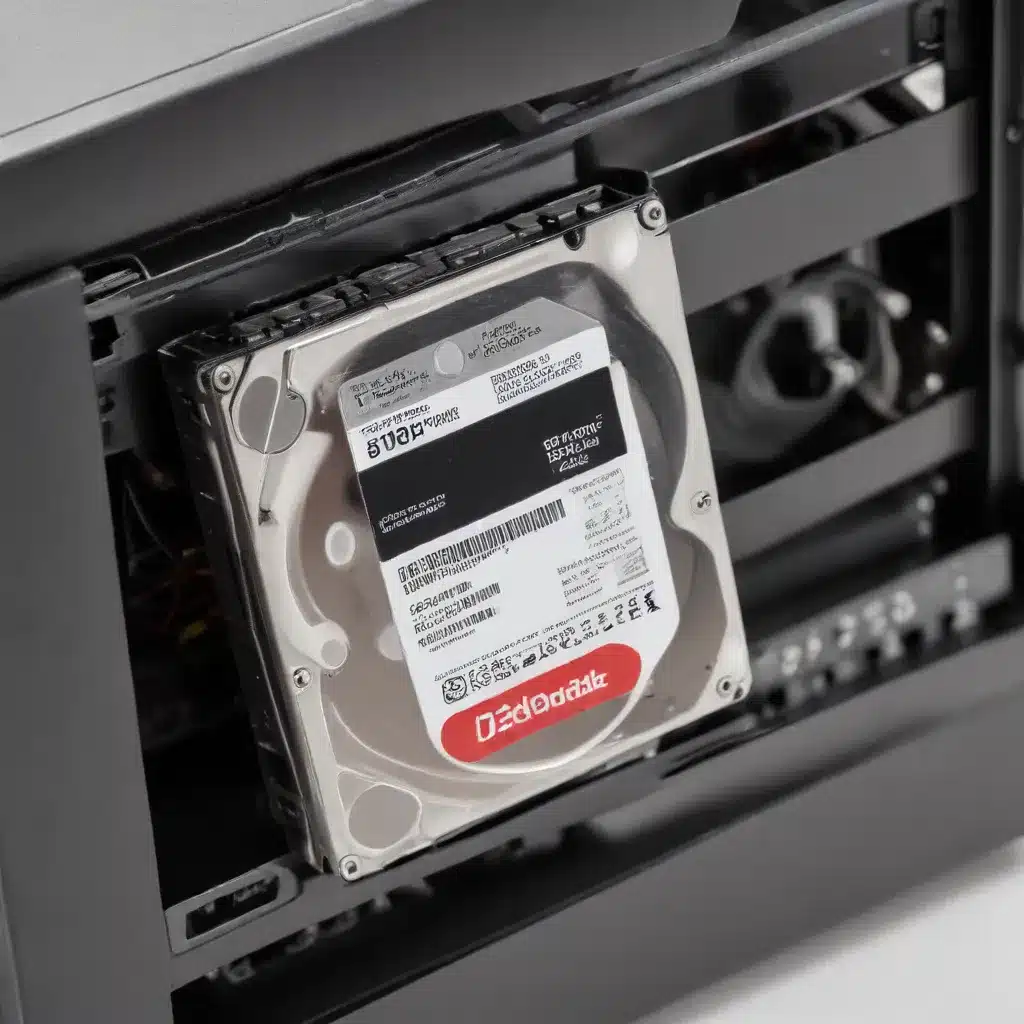
Diagnosing the Issue and Determining Recovery Options
As an experienced IT professional, I’ve encountered numerous cases where a network storage device has crashed, leaving users frustrated and concerned about their data. In this comprehensive guide, we’ll explore advanced recovery methods to revive a crashed network storage device and salvage your critical information.
First and foremost, it’s crucial to diagnose the root cause of the issue. Is the device not powering on? Is it unable to connect to the network? Or is the device simply not recognizing the stored data? Depending on the specific problem, we’ll need to tailor our recovery approach accordingly.
One common scenario is when the device won’t start up at all. This could be due to a hardware failure, such as a faulty power supply or a damaged hard drive. In such cases, the first step is to ensure the device is receiving power and the cables are properly connected. If the issue persists, it may be necessary to open the device and inspect the internal components for any visible damage or wear.
Tip: If you’re not comfortable opening the device yourself, it’s best to consult a qualified technician to avoid further damage.
Attempting a System Restore or Reset
If the device appears to be functioning, but you’re unable to access the stored data, the issue may be software-related. In this case, you can try to restore the device to its factory settings or perform a system reset.
Most network storage devices come with a built-in recovery or reset function, often accessible through a physical button or a software-based menu. Consult the manufacturer’s instructions or the device’s user manual to locate and initiate the reset process.
Note: Before performing a reset, make sure to back up any critical data that you can access. A system reset will erase all the stored information on the device.
Once the reset is complete, you can try to set up the device again and see if the issue has been resolved. If the problem persists, it’s time to explore more advanced recovery methods.
Utilizing Third-Party Recovery Software
If the standard troubleshooting steps haven’t yielded the desired results, it’s time to turn to specialized data recovery software. There are several reliable third-party tools available that can help you regain access to your lost data.
One such tool is Acronis Cyber Protect Home Office, a comprehensive backup and recovery solution. Acronis Cyber Protect Home Office offers a feature called “Recover on Another Machine,” which allows you to restore your backup to a different device, even if the original one is no longer functioning.
To use this feature, you’ll need to have a previous backup of your network storage device. If you don’t have a backup, you can try using Acronis Cyber Protect Home Office’s data recovery capabilities to scan the crashed device and attempt to recover the files directly.
Tip: When using third-party recovery software, always follow the manufacturer’s instructions carefully and be prepared to work through the process patiently, as data recovery can be a time-consuming task.
Exploring Hardware-Level Recovery Options
In some cases, the issue with the network storage device may be related to a hardware failure that cannot be resolved through software-based solutions. This is where more advanced recovery methods come into play.
One option is to seek the assistance of a professional data recovery service. These specialized service providers have access to advanced tools and techniques that can often retrieve data from damaged or corrupted storage devices, even in the most severe cases.
Warning: Attempting to disassemble or repair the device yourself without proper training and equipment can further damage the device and reduce the chances of successful data recovery.
If you decide to pursue professional data recovery services, be prepared to provide as much information about the device and the issue as possible. This will help the technicians assess the situation and determine the best course of action.
Preventive Measures and Backup Strategies
To avoid the stress and potential data loss associated with a crashed network storage device, it’s crucial to implement proactive preventive measures and robust backup strategies.
Regularly back up your data: Implement a reliable backup routine, either through the device’s built-in backup tools or by using a third-party backup solution. This will ensure that your critical data is safely stored and can be easily restored in the event of a device failure.
Monitor device health: Keep a close eye on the device’s performance, temperature, and any error messages or warning signs. Address any issues promptly to prevent further deterioration.
Consider redundancy: Explore the option of using a RAID (Redundant Array of Independent Disks) configuration or implementing a mirrored backup solution. This will provide an additional layer of protection, ensuring that your data is still accessible even if one of the storage devices fails.
Stay up-to-date with firmware and software: Regularly check for and install any available firmware or software updates from the manufacturer. These updates often address known issues and vulnerabilities, helping to maintain the device’s stability and reliability.
By following these preventive measures and implementing robust backup strategies, you can significantly reduce the risk of a devastating data loss event and ensure the long-term viability of your network storage device.
Conclusion
Reviving a crashed network storage device can be a challenging task, but with the right approach and the right tools, it’s often possible to recover your valuable data. Remember to start with basic troubleshooting steps, explore software-based recovery options, and consider professional data recovery services if necessary.
Most importantly, don’t hesitate to seek help from qualified technicians or IT professionals if you’re unsure about the recovery process. Your data is too important to risk further damage or loss.
Stay vigilant, implement preventive measures, and always maintain a reliable backup strategy. With these strategies in place, you can rest assured that your critical data is protected, even in the face of a network storage device failure.












